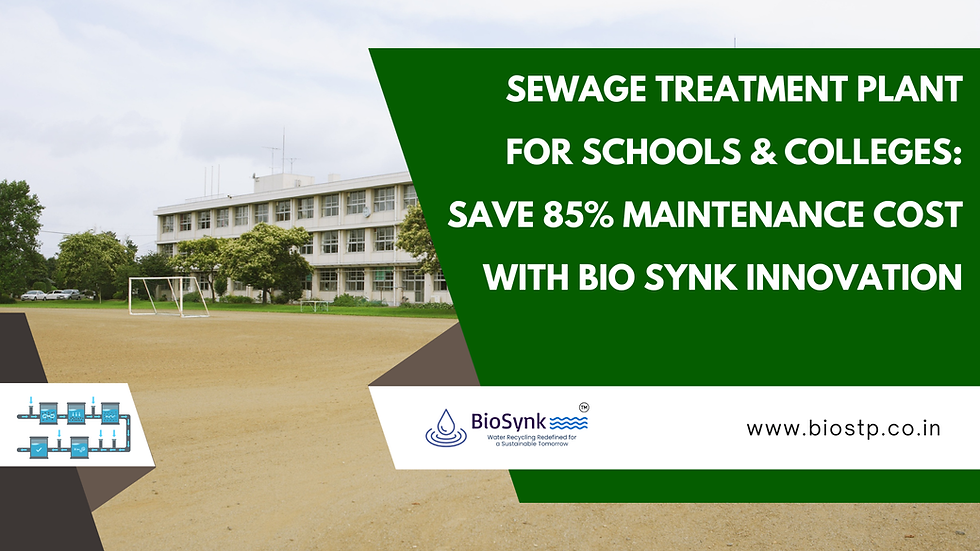Understanding Pollution Control Board Regulations: A Key Guide for Sewage Treatment Plant Setup in Indian Real Estate Development
- Dakshayani S Dalavai
- Feb 12
- 2 min read
A Guide for Real Estate and Land Developers
Setting up sewage treatment plants (STPs) is a crucial aspect for real estate and land developers in India, especially in light of increasing urbanization and environmental concerns. Compliance with Pollution Control Board (PCB) regulations is essential to ensure sustainability and legal conformity. This guide outlines the key steps and considerations for developers.
1. Understanding the Regulatory Framework
Before embarking on the establishment of an STP, it is vital to grasp the regulatory framework governing sewage treatment in India:
Central Pollution Control Board (CPCB): The apex body that sets standards for sewage treatment and monitors compliance.
State Pollution Control Boards (SPCBs): State-level authorities responsible for implementing CPCB guidelines and regulations.
Environmental Impact Assessment (EIA): Required for projects that may significantly affect the environment.
2. Site Selection and Feasibility Study
Choosing the right site for an STP is critical. Consider the following:
Proximity to the sewage source.
Accessibility for maintenance and operation.
Impact on local communities and ecosystems.
3. Obtaining Necessary Approvals
Developers must secure various approvals before proceeding:
Consent to Establish (CTE): Obtained from the SPCB before construction begins.
Consent to Operate (CTO): Required once the STP is constructed and ready for operation.
Clearance from Local Authorities: Ensuring compliance with local zoning and land use regulations.
4. Design and Technology Selection
Choosing the right technology and design for the STP is essential for efficiency and compliance:
Consideration of the volume of sewage and treatment capacity.
Selection of appropriate treatment technologies (e.g., activated sludge, biofilters, Bio Synk sewage treatment).
Integration of energy-efficient and sustainable practices.
5. Compliance and Monitoring
Once the STP is operational, ongoing compliance is crucial:
Regular monitoring of effluent quality to meet discharge standards.
Maintaining records and submitting periodic reports to the SPCB.
Implementing corrective measures for any non-compliance issues.
6. Community Engagement and Awareness
Engaging with the local community is vital:
Informing residents about the benefits of the STP.
Addressing concerns and feedback from the community.
Promoting awareness about sewage treatment and environmental sustainability.
7.Future Trends and Innovations
Stay informed about emerging trends in sewage treatment:
Adoption of advanced treatment technologies and automation.
Incorporation of waste-to-energy solutions.
Utilization of treated sewage for non-potable applications.

Conclusion
Setting up sewage treatment plants in India involves navigating a complex landscape of regulations and requirements. By understanding the regulatory framework, obtaining necessary approvals, and engaging with the community, real estate and land developers can successfully establish BIO SYNK STPs that contribute to sustainable urban development.



Comments